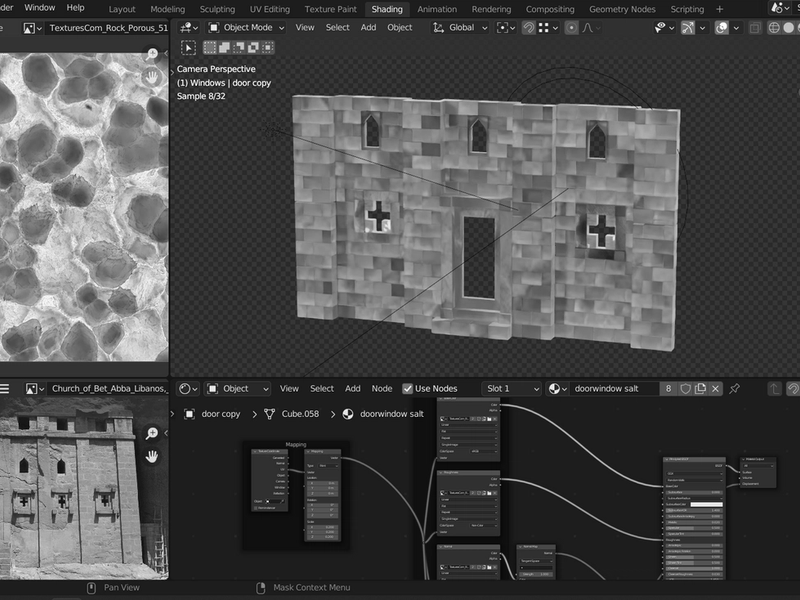“The Museum of Artifice” explores architectural conservation as a mode of storytelling and mythmaking, complicating notions of heritage and dissolving the limits of territory. Stemming from the larger project of “The Abyssinian Cyber Vernaculus”, the errant digital twin of the rock-hewn Lalibela Churches in Northern Ethiopia, the work co-mingles with (and at times confronts) the resident myths of heritage in Sharjah.
The medieval churches of Lalibela remain a site of worship. The carved bedrock, the “living stone”, feels like an architecture as old as its geology. However, the churches and their landscape are subject to persistent decay and change. Just as the rocky surface erodes over time under environmental events, the promise of its permanence also wanes, and with it, the legitimacy of heritage.
This project is the arrival of the sacred architecture of Lalibela into Sharjah under a new guise as it mutates from stone to salt, carrying with it its attendant myths from across the Red Sea and through the Arabian Peninsula. Situating the facade in this context complicates the temporality of the myths of belonging and filiation and expands into what philosopher Édouard Glissant called a “poetic relation” between two geographies whose histories and material cultures have brushed against one another over millennia.
In this form, the work emerges as a ‘rhizomatic territory’ — an unruly world that escapes its geographical and historical limitations. Built from salt, there is no desire for permanence, but rather a destiny for deterioration. The facade will eventually be dismantled, and the salt blocks returned to their retailer for re-use, only leaving behind remnants.
